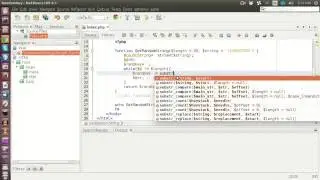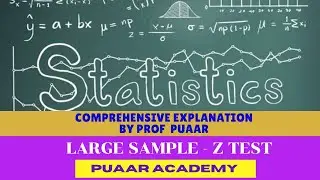Big M Method Simplified and Easiest way - 10 Part 1 of 4
Operations Research - OR
MBA - MCA - CA - CS - CWA - CPA - CFA - CMA - BBA - BCOM - MCOM - CAIIB - FIII
Big M Method
NOTE: It is not necessary that a constraint can have 'greater than or equal to' or 'equal to' only in a Minimization Problem. In a Maximization LPP also there can be constraints with these signs. So, we should not believe that we can use Big-M Method only to solve minimization problems. A maximization problem with 'greater than or equal to' and/or 'equal to' types of constraints can also be solved by Big-M Method.
If an LPP has constraints with 'greater than or equal to' or 'equal to' sign, we can solve it in more than one ways and Big-M Method is one of such ways.
Now that you have worked a few examples of LP problems with the three different types of constraints, you are ready to solve a minimization problem using the simplex algorithm. Minimization problems are quite similar to the maximization problem tackled earlier. The one significant difference involves the Cj - Zj row. Because our objective is now to minimize costs, the new variable to enter the solution in each tableau the pivot/key column will be the one with the largest negative number in the Cj - Zj row. Thus, we will be choosing the variable that decreases costs the most. In minimization problems, an optimal solution is reached when all numbers in the Cj - Zj row are zero or positive—just the opposite from the maximization case. All other simplex steps, as shown, remain the same.
1) Choose the variable with the largest negative, i.e. smallest, Cj - Zj value to enter the solution.
2) Determine the row to be replaced by selecting the one with the smallest, non-negative, quantity-to-pivot-column ratio, i.e.e Replacement ratio or minimum ratio.
3) Calculate new values for the pivot/key row.
4) Calculate new values for the other rows.
5) Calculate the Cj - Zj values for this tableau. If there are any Cj - Zj numbers less than zero, return to step.
Introducing Artificial Variable(s) - Aj
To convert an LPP having constraint with 'greater than or equal to' sign into equality, we simply add an “artificial” variable (Aj) to the equation. An artificial variable is a variable that has no physical meaning in terms of a real-world LP problem. It simply allows us to create a basic feasible solution to start the simplex algorithm. An artificial variable is not allowed to appear in the final solution to the problem.
Introducing Surplus Variable(s) - Sj
To handle ≥ constraints, a “surplus” variable (Sj) is first subtracted and then an artificial variable (Aj) is added to form a new equation. A surplus variable does have a physical meaning—it is the amount over and above a required minimum level set on the right-hand side of a greater-than-or-equal-to constraint. Whenever an artificial or surplus variable is added to one of the constraints, it must also be included in the other equations and in the problem’s objective function, just as was done for slack variables. Each artificial variable is assigned an extremely high cost (say Mj) to ensure that it does not appear in the final solution. Surplus variables, like slack variables, carry a zero cost.
Big M Method Simplified and Easiest way - 10 to 13
This is a typical example of use of Big-M Method. In this example, we have to introduce all, Slack, Surplus and Artificial variables. The important point to be noted is, a surplus variable can never become a basic variable in the initial solution. Hence, in a constraint where there are surplus as well as artificial variable both, we should take proper care.
www.prashantpuaar.com
Смотрите видео Big M Method Simplified and Easiest way - 10 Part 1 of 4 онлайн, длительностью часов минут секунд в хорошем качестве, которое загружено на канал PUAAR Academy 29 Май 2016. Делитесь ссылкой на видео в социальных сетях, чтобы ваши подписчики и друзья так же посмотрели это видео. Данный видеоклип посмотрели 24,870 раз и оно понравилось 168 посетителям.



















